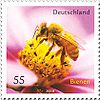At the request of the Dutch Nature and Environment Foundation, two scientists of the Dutch Centre for Agriculture and Environment (CLM) conducted an independent analysis of confidential studies on potential risks of the pesticide imidacloprid to bees through two visits to Bayer's 'reading room'. Their conclusions were as follows. The unpublished studies provide insufficient information on long-term (sub) lethal effects, combination toxicology or synergy between factors such as imidacloprid exposure and the impact of diseases and scarcity of alternative food sources. Sublethal effects mentioned in the studies were brushed aside by the Dutch regulators. The confidential studies worked with a limited number of crops and doses, and extrapolated data were used on other crops for which no residue measurements in pollen and nectar were available. The regulatory authority assessed the risks to bees on the basis of Good Agricultural Practice (GAP) and strict observance of the label text. This is, unfortunately, not in line with common practice, causing greater emissions, exposures and risks. The regulators applied little or no safety margins in the assessment of the data, rarely adopted worst-case scenarios and allowed the use of largely extrapolated data. Degradation models were frequently used instead of direct measurements. Since the basis for risk assessment was very thin, it was impossible to determine whether or not bees were at risk through the use of imidacloprid. There were so many uncertainties, that risks can not be ruled out. This is consistent with the conclusions of EFSA.

- Log in to post comments
